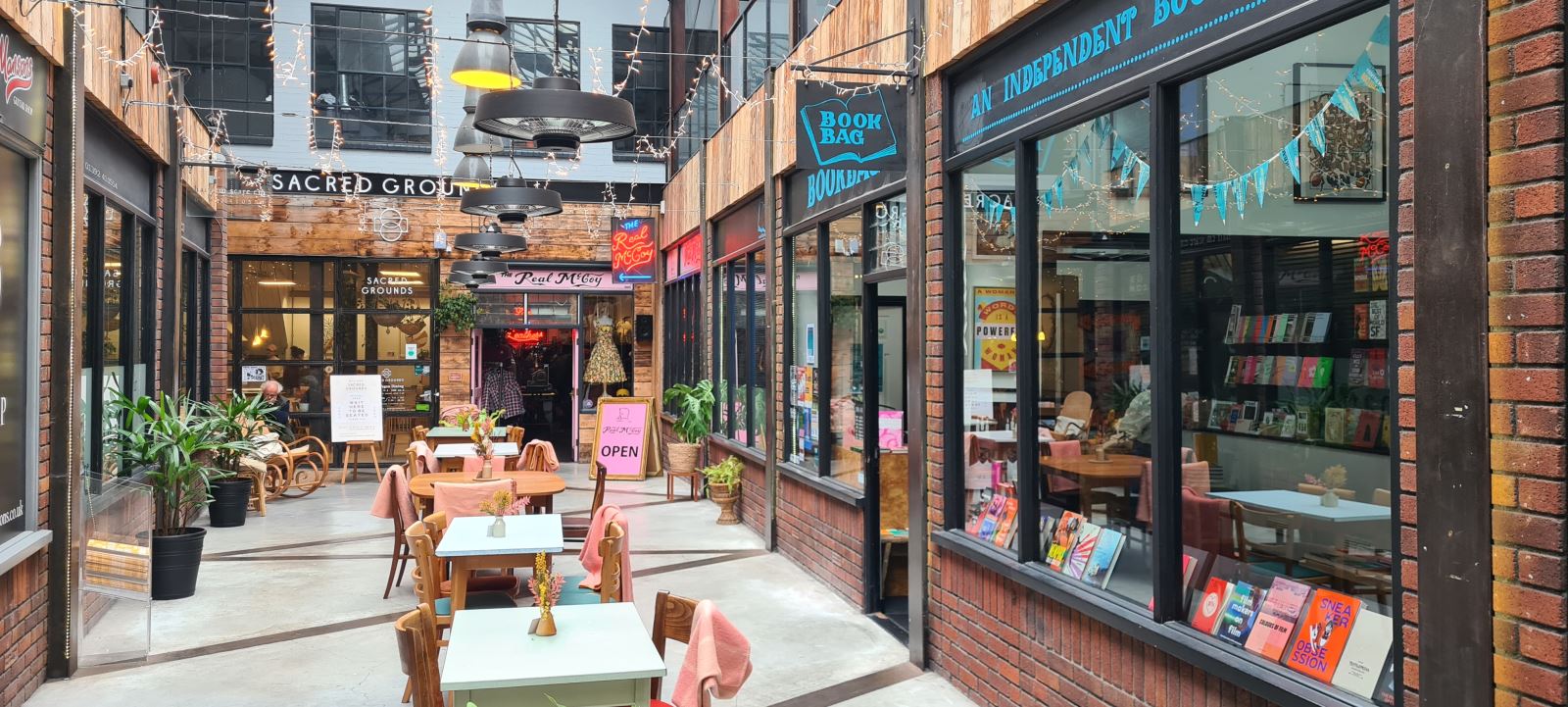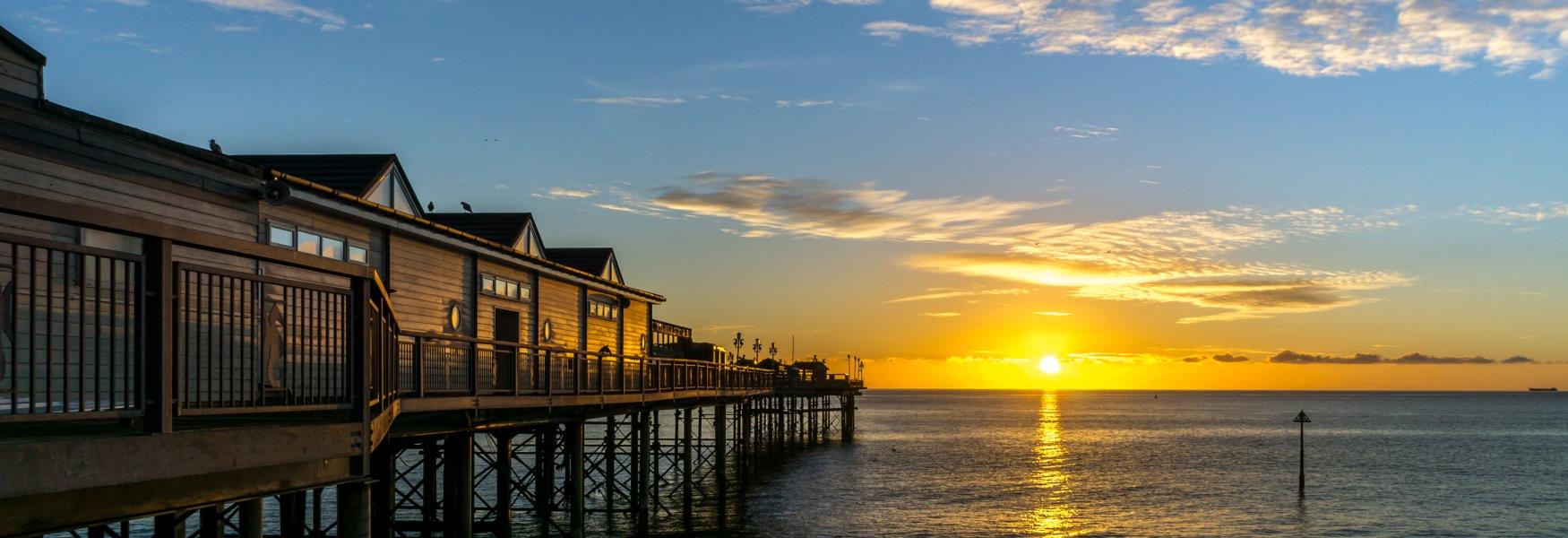
Guest Blog Post - InExeter
As the Business Improvement District (BID) of Exeter, our mission is to champion and support local businesses. That's why we were thrilled to collaborate with the Exeter Red Coat Guides to develop a new tour that celebrates local businesses and takes people on a unique journey through the city's commercially interesting areas.
The Red Coats, a group of passionate and knowledgeable volunteers and overseen by Exeter City Council are well-known in Exeter for offering year-round tours that showcase the city's rich history. These tours, which operate daily and offer a wide range of options, are led by guides who are akin to walking, talking encyclopedias of Exeter.
.jpg) As part of our partnership with the Red Coat Guides, I joined one of their tours to experience it for myself. Despite having visited Exeter throughout my life and lived and worked in the city for the past 20 years, I was surprised by how much I learned from the tour. For instance, I had never noticed the statue of Queen Victoria on top of Marks and Spencer before.
As part of our partnership with the Red Coat Guides, I joined one of their tours to experience it for myself. Despite having visited Exeter throughout my life and lived and worked in the city for the past 20 years, I was surprised by how much I learned from the tour. For instance, I had never noticed the statue of Queen Victoria on top of Marks and Spencer before.
Our tour started at the Cathedral Green, where we were introduced to Roman Exeter, where it all began in AD55. It was fascinating to learn about Exeter's early prosperity, which was based on the woollen cloth trade and peaked in the mid-eighteenth century. Exeter was once one of England's most renowned historic cities, frequented by tourists and admired by architectural historians. However, the landscape of the city was significantly altered during World War II when much of the city centre was devastated by German bombing on May 4th, 1942.
As we walked along Cathedral Green, we passed Exeter's first custom house, which still bears the coat of arms of Queen Elizabeth I, and the first of the seven churches that remain in the city today (there used to be a total of 33!). We then moved on to Catherine Street, where we saw the newly opened Hotel Indigo, which was previously a department store dating back to 1792, and Catherine Square, where the ruins of the Alms Houses from the 1400s still stand as a memorial to the wartime bombing.
In Catherine Square, we also saw St. Stephen's Church, which has a unique Bow that provides an archway from the High Street to Catherine Square. Our guide transported us back to the late Middle Ages, when King Henry VI was on the throne, and recounted a tale about Bishop Lacy, a friend of the King, who boasted that he could get the monarch to bow to him on his royal visit in 1452. The bishop positioned himself in Catherine Square, surrounded by an eager entourage, and sure enough, the King "bowed" to the bishop as he rode on his horse under St. Stephen's Bow. We also learned that Cromwell stabled horses in the crypt of the church when he occupied the city, which was a fascinating insight into the history of our city.
.jpg) The tour then took us along Gandy Street, where we learned about the area's leatherworks in the past and fantasized about the rumour that it was the inspiration for Diagon Alley in J.K. Rowling's Harry Potter series. Although it has never been proven, there are similarities, including Vaults Nightclub, which brings to mind images of Gringotts Bank.
The tour then took us along Gandy Street, where we learned about the area's leatherworks in the past and fantasized about the rumour that it was the inspiration for Diagon Alley in J.K. Rowling's Harry Potter series. Although it has never been proven, there are similarities, including Vaults Nightclub, which brings to mind images of Gringotts Bank.
Our guide also informed us about the old gates of the city, which have long since been removed due to industrialization, but are still referenced in the names of areas in the city, such as "Eastgate" used to refer to the Sidwell Street and Paris Street area.
As we walked through Queen Street, we stood overlooking the Guildhall Shopping Centre, and our guide paints a vivid picture of Georgian Exeter, describing the open market stalls that once stood on Higher Market Street, which was known for its unsanitary conditions and prevalent diseases like cholera. However, today, the air is filled with the sweet aroma of sugar wafting out of Roly's fudge shop, a much more pleasant smell – I make a mental note to revisit later.
The Higher Market building itself, often referred to as "Little Covent Garden," was built by the same architects who designed Covent Garden in London. It was almost demolished at one point in history, but thankfully, it was preserved and now houses a variety of restaurants offering global flavours.
As we continued our tour, we passed through the Guildhall Shopping Centre to Waterbeer Street, a medieval street where buckets of water were once sold. Outside the Historic Guildhall, which used to be the city's courtrooms with its cells still intact, we learn that Charles Dickens used to frequent the Turk's Head pub to write court reports. I imagine many a character was inspired by the characters he observed while enjoying a pint.
Next, we head to the West Quarter of the city, a vibrant and independent shopping district filled with food, fashion, arts, and unique finds. Along the way, we pass by the Exonian Bar, which was formerly the Franklin Cinema in the 1920s and had a colourful character known as "Artful" Thomas, who used to spray disinfectant on cinemagoers as he walked up and down the aisles.
Halfway down Fore Street, we encounter the Real McCoy Arcade, now home to Exeter's oldest vintage store, established in 1985. Previously known as "Ottons," this store was once the city's largest "help yourself to it" hardware store, selling everything from screws to Aga cookers. Further down Fore Street, we turn into West Street, where we spot a blue plaque commemorating the story of Mary, the Exeter Pigeon, and her owner Charlie Burrows, whose cobblers shop once stood at this site. Mary was a member of the Special Pigeon Service during World War II, tasked with flying secret information from occupied Europe back to Britain. She was awarded the Dicken Medal, the animal equivalent of the Victoria Cross. Her story has been made into a children’s story book which is available at Bookbag in Real McCoy’s Arcade.

At the bottom of West Street, we reach the old West Gate and discover The House That Moved, a medieval house built in 1430 that was moved 70 yards away when the inner bypass was constructed in the 1960s, showcasing a unique piece of Exeter's architectural history.
Our tour concludes at Exeter's Historic Quayside, where we learn about its significance during the 18th century as a hub for goods coming into the city. The Custom House, the oldest surviving Custom House in England and one of the earliest brick buildings in Exeter, originally had open arches where goods were assessed for taxes. Over the past 40 years, this area has undergone significant regeneration, transforming from a derelict post-industrial site into a bustling visitor destination lined with eateries and shops along the waterside.
The tour lasted just over an hour and a half and was a thoroughly enjoyable experience. If you think these tours are for history boffins, you are very much mistaken. If you love where you live and want to find out more, I recommend looking at the tours provided by the Red Coat Guides. Whilst the tour I went on was a special edition, fear not – after it’s great success, they have been introduced into the Red Coats summer programme titled ‘Markets, Merchants and Mariners’ running every Friday at 2:30pm starting at the Hooker Statue on Cathedral Green. For more information or to discover more tours visit https://exeter.gov.uk/leisure-and-culture/our-attractions/red-coat-guided-tours/summer-2023-tour-programme/.
Written by:
Alice Evans, InExeter Marketing Manager
Related
Comments
Comments are disabled for this post.



 to add an item to your Itinerary basket.
to add an item to your Itinerary basket.









